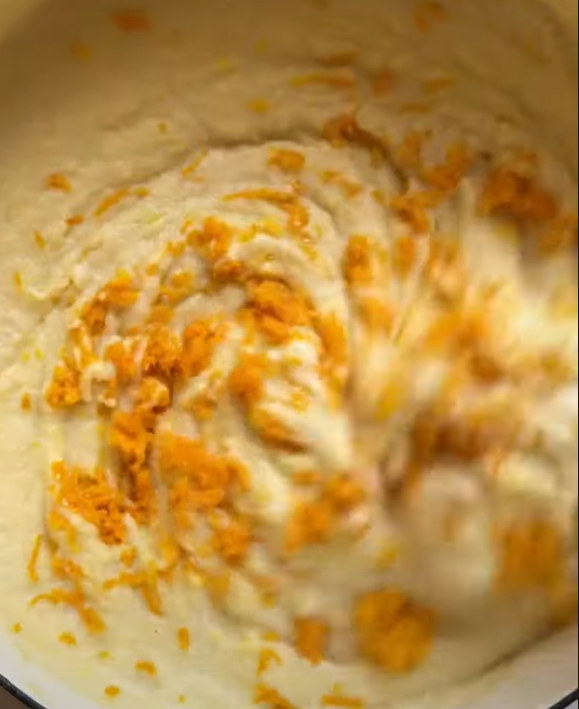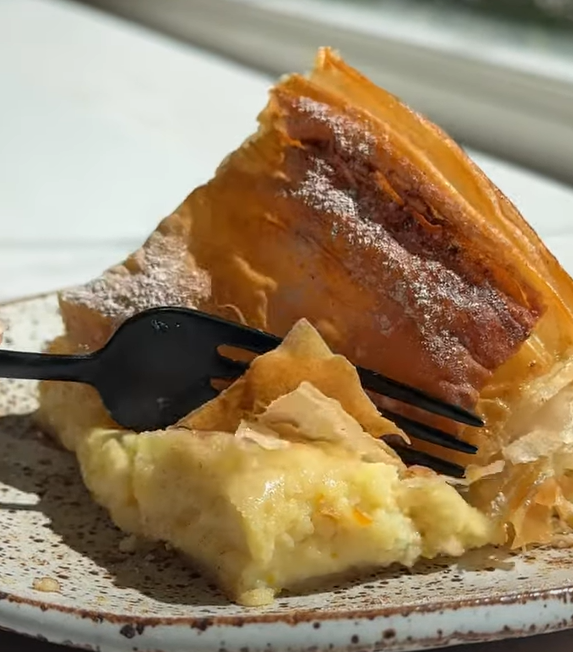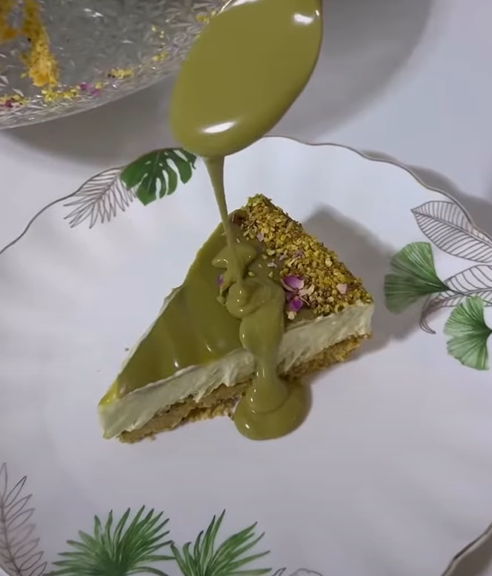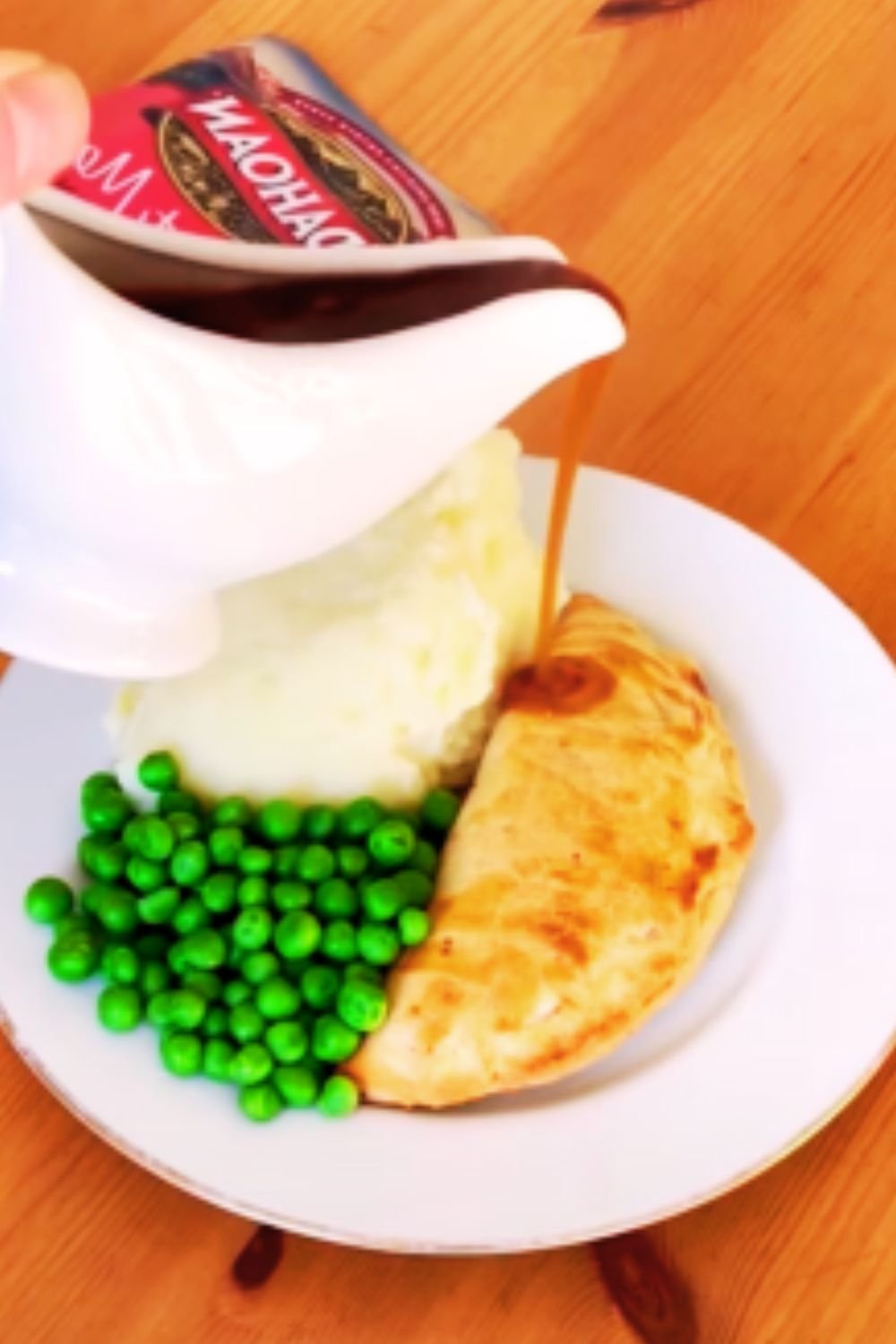I’ve been fascinated by Greek cuisine for years, but nothing quite prepared me for my first encounter with bougatsa. Walking through the narrow streets of Thessaloniki on a crisp morning, the aroma of buttery phyllo and warm custard drew me into a small bakery where locals were already queuing for their daily dose of this magnificent pastry. That moment changed my perspective on what breakfast could be – and I knew I had to master this recipe myself.
Bougatsa represents more than just a pastry; it’s a cultural experience wrapped in delicate layers of phyllo dough. This traditional Greek dish has been warming hearts and satisfying appetites for generations, and today I’m sharing everything I’ve learned about creating the perfect bougatsa with herbs and flour variations that will transform your kitchen into a Greek bakery.
Understanding Bougatsa: The Foundation of Greek Comfort Food
Bougatsa is a traditional Greek pastry made with phyllo dough and filled with various ingredients, most commonly a rich custard made from semolina flour, milk, and eggs. The word itself derives from the Ottoman Turkish “börek,” reflecting the complex culinary history of the Mediterranean region.
Phyllo Dough forms the backbone of this pastry – paper-thin sheets of dough that create the characteristic flaky, crispy exterior when properly layered and baked.
Semolina Flour serves as the primary thickening agent for the custard filling, providing a distinctive texture that’s neither too thick nor too thin.
Fresh Herbs in modern interpretations add complexity and depth to the traditional recipe, with options ranging from aromatic dill to robust oregano.
The beauty of bougatsa lies in its versatility. While the classic version features a sweet custard filling dusted with powdered sugar and cinnamon, savory variations incorporating herbs and different types of flour have gained popularity among contemporary Greek cooks and food enthusiasts worldwide.
The Art of Phyllo: Working with Greece’s Most Delicate Dough
My journey with phyllo dough began with disaster. The first time I attempted to work with these gossamer-thin sheets, they cracked, tore, and generally refused to cooperate. I’ve since learned that phyllo demands respect, patience, and the right technique.
Phyllo dough consists of just flour, water, oil, and sometimes vinegar, yet creating those impossibly thin sheets requires skill that takes years to master. Fortunately, high-quality frozen phyllo is readily available in most supermarkets, making bougatsa accessible to home cooks everywhere.
When working with phyllo, I always keep several essential points in mind. First, thaw frozen phyllo completely – rushing this process leads to brittle, unworkable sheets. Second, keep unused sheets covered with a damp towel to prevent drying out. Third, work quickly but deliberately; phyllo waits for no one.
The key to successful phyllo handling lies in understanding its temperament. These delicate sheets respond best to confident, smooth movements. Hesitation often results in tears, while aggressive handling guarantees disaster.
Essential Ingredients for Herb-Enhanced Bougatsa
Creating exceptional bougatsa requires quality ingredients, and I’ve discovered that small upgrades make enormous differences in the final product. Let me walk you through my preferred ingredients and why each matters.
Primary Components
| Ingredient | Quantity | Purpose | Quality Notes |
|---|---|---|---|
| Phyllo Dough | 1 package (16 oz) | Structure and texture | Choose fresh or properly frozen sheets |
| Whole Milk | 4 cups | Custard base | Full-fat provides richness |
| Semolina Flour | 1 cup | Thickening agent | Fine grain works best |
| All-Purpose Flour | 1/2 cup | Additional thickening | Provides stability |
| Large Eggs | 4 whole + 2 yolks | Richness and binding | Room temperature preferred |
| Unsalted Butter | 1 cup (melted) | Flavor and browning | European-style preferred |
| Sugar | 3/4 cup | Sweetness balance | Granulated white sugar |
Herb Selection and Preparation
| Herb Type | Amount | Flavor Profile | Preparation Method |
|---|---|---|---|
| Fresh Dill | 1/4 cup chopped | Bright, grassy | Remove thick stems, chop finely |
| Greek Oregano | 2 tablespoons | Earthy, robust | Dried preferred for intensity |
| Fresh Mint | 2 tablespoons | Cool, refreshing | Young leaves only |
| Parsley | 1/4 cup | Clean, peppery | Flat-leaf variety |
| Chives | 2 tablespoons | Mild onion flavor | Cut with scissors, not knife |
The herb selection transforms traditional bougatsa into something uniquely aromatic and complex. I’ve found that combining two or three herbs creates the most balanced flavor profile, with dill and oregano forming my favorite partnership.
Flour Variations and Their Impact
| Flour Type | Characteristics | Best Used For | Texture Result |
|---|---|---|---|
| Semolina | Coarse, golden | Traditional custard | Slightly grainy, rich |
| All-Purpose | Neutral, fine | Binding and structure | Smooth, stable |
| Pastry Flour | Low protein | Delicate fillings | Tender, light |
| Whole Wheat | Nutty, dense | Rustic variations | Hearty, complex |
| Rice Flour | Gluten-free | Dietary restrictions | Clean, neutral |
Step-by-Step Bougatsa Creation Process
My approach to bougatsa has evolved through countless batches, failed attempts, and gradual refinements. I’ll share the method that consistently produces restaurant-quality results in my home kitchen.
Preparing the Herb-Infused Custard
The custard forms the soul of bougatsa, and I begin this process by infusing the milk with herbs. This technique, borrowed from French cooking, creates depth that permeates every bite.
I start by gently heating the milk in a heavy-bottomed saucepan, adding the hardier herbs like oregano and dill early in the process. The milk should warm slowly – rushing leads to scorching, which ruins the entire batch. While the milk heats, I whisk together the semolina flour, all-purpose flour, and sugar in a separate bowl.
The critical moment arrives when combining the flour mixture with the warm milk. I remove the milk from heat and gradually whisk in the flour mixture, ensuring no lumps form. This requires patience and constant whisking – any hesitation results in a lumpy custard that’s difficult to fix.
Returning the mixture to medium-low heat, I continue whisking constantly as the custard thickens. This process takes approximately 8-10 minutes, and I know it’s ready when the mixture coats the back of a spoon and pulls away from the pan’s sides when stirred.
The final step involves tempering the beaten eggs. I slowly drizzle a cup of the hot custard into the beaten eggs while whisking vigorously, then pour this mixture back into the remaining custard. This technique prevents the eggs from scrambling while ensuring a silky, rich texture.

Assembling the Phyllo Layers
Working with phyllo requires organization and speed. Before beginning, I arrange all my tools: a pastry brush, melted butter, a clean kitchen towel, and my prepared custard. The phyllo package sits nearby, covered with the damp towel.
I brush the bottom of my 9×13-inch baking pan with melted butter, then begin layering phyllo sheets. Each sheet receives a light brush of butter before adding the next. I use approximately half the phyllo package for the bottom layer, creating a sturdy foundation for the custard.
The custard spreads evenly across the phyllo base, and I make sure it reaches all corners without creating air pockets. The remaining phyllo sheets form the top layer, with each sheet receiving the same careful butter treatment.
The final phyllo sheet gets extra attention – I brush it generously with butter and score it lightly with a sharp knife, creating serving portions while preventing the top from puffing excessively during baking.
Baking Techniques for Perfect Results
My oven preheats to 350°F (175°C) while I complete the assembly. Bougatsa bakes best in the center rack, where heat circulation remains consistent. The initial 25 minutes create the structure, while the final 15-20 minutes develop the golden-brown color I’m seeking.
I watch for visual cues rather than relying solely on time. The phyllo should be deeply golden, and the custard should be set but still slightly jiggly in the center. Overbaking results in a rubbery texture that’s impossible to fix.
Advanced Techniques for Exceptional Bougatsa
After mastering the basics, I’ve developed several techniques that elevate bougatsa from good to extraordinary. These methods require additional time but produce results that rival the best Greek bakeries.
Creating Flavor Layers
I’ve discovered that building flavor in layers creates complexity that single additions cannot achieve. For herb variations, I infuse the milk with dried herbs while reserving fresh herbs for folding into the finished custard. This dual approach provides both deep, cooked flavors and bright, fresh notes.
Another technique involves creating herb butter by combining finely chopped fresh herbs with the melted butter used between phyllo layers. This method distributes herb flavors throughout the pastry while maintaining the traditional buttery richness.
Temperature Control Mastery
Temperature management makes the difference between professional and amateur results. I’ve learned to use a thermometer when heating milk – maintaining temperatures between 170-180°F prevents scorching while ensuring proper herb extraction.
For the custard, I aim for a final temperature of 160°F, which indicates that the eggs have properly thickened the mixture without curdling. This precision requires attention but guarantees consistent results.
Phyllo Handling Innovations
My most successful phyllo technique involves working with slightly overlapped sheets rather than perfectly aligned ones. This method creates natural variation in thickness and prevents the mechanical appearance that screams “homemade attempt.”
I also brush phyllo sheets with herb-infused butter using a silicone brush, which provides more control than traditional pastry brushes. The silicone bristles distribute butter evenly without tearing delicate phyllo.
Nutritional Profile and Health Considerations
Understanding bougatsa’s nutritional content helps in planning balanced meals and accommodating dietary needs. I’ve analyzed the nutritional profile to provide accurate information for health-conscious cooks.
Comprehensive Nutritional Analysis
| Component | Per Serving (1/12 recipe) | Daily Value % | Health Impact |
|---|---|---|---|
| Calories | 285 | 14% | Moderate energy density |
| Total Fat | 12g | 18% | Primarily from butter and eggs |
| Saturated Fat | 7g | 35% | Consider portion size |
| Cholesterol | 95mg | 32% | From eggs and dairy |
| Sodium | 220mg | 10% | Moderate sodium content |
| Carbohydrates | 38g | 13% | Complex carbs from flour |
| Dietary Fiber | 1g | 4% | Low fiber content |
| Protein | 8g | 16% | Quality protein from eggs and milk |
| Calcium | 180mg | 18% | Excellent calcium source |
| Iron | 2mg | 11% | Good iron contribution |
Herb-Specific Health Benefits
| Herb | Key Nutrients | Health Properties | Recommended Amount |
|---|---|---|---|
| Dill | Vitamin C, Manganese | Digestive support, antioxidant | 1-2 tablespoons fresh |
| Oregano | Vitamin K, Antioxidants | Antimicrobial, anti-inflammatory | 1 tablespoon dried |
| Mint | Menthol, Iron | Digestive aid, cooling properties | 1 tablespoon fresh |
| Parsley | Vitamin K, Folate | Kidney support, immune boost | 2 tablespoons fresh |
The herbs I incorporate aren’t just flavor enhancers – they contribute meaningful nutritional value while adding negligible calories. This makes herb-enhanced bougatsa a more nutritionally dense option compared to traditional versions.
Storage, Reheating, and Serving Suggestions
Proper storage techniques preserve bougatsa’s texture and flavor, allowing you to enjoy this pastry beyond the initial serving. My storage methods have been refined through experience and occasional mishaps.
Optimal Storage Methods
Freshly baked bougatsa tastes best within 4 hours of baking, but proper storage extends its quality significantly. I cool the pastry completely before covering it with plastic wrap, which prevents condensation from making the phyllo soggy.
Refrigerated bougatsa maintains quality for up to 4 days, though the phyllo gradually loses its crispness. For longer storage, I cut individual portions and freeze them in airtight containers for up to 3 months.
Reheating Techniques
| Method | Temperature | Time | Texture Result | Best For |
|---|---|---|---|---|
| Oven | 325°F | 15-20 min | Crispy phyllo restored | Best overall method |
| Toaster Oven | 300°F | 10-12 min | Good crispness | Individual portions |
| Microwave | Medium power | 1-2 min | Soft, warm | Quick reheating only |
| Stovetop | Low heat | 5-8 min | Controlled warming | Small portions |
I strongly prefer oven reheating, which restores much of the original texture. Covering loosely with foil prevents excessive browning while allowing the phyllo to crisp.
Creative Serving Presentations
Traditional bougatsa appears dusted with powdered sugar and cinnamon, but herb varieties offer opportunities for more creative presentations. I’ve developed several serving styles that highlight the savory elements while maintaining visual appeal.
For brunch presentations, I serve bougatsa alongside Greek yogurt drizzled with honey and chopped nuts. The cooling yogurt balances the rich pastry while the honey bridges sweet and savory flavors.
Dinner presentations work well with a simple salad of mixed greens, cherry tomatoes, and olive oil vinaigrette. The fresh vegetables provide textural contrast and cleanse the palate between bites of rich pastry.

Troubleshooting Common Bougatsa Challenges
Every bougatsa maker encounters obstacles, and I’ve experienced most of them during my learning process. Understanding common problems and their solutions prevents frustration and improves success rates.
Phyllo-Related Issues
Problem: Phyllo tears during handling The most common cause involves dried-out phyllo sheets. I prevent this by keeping unused sheets covered with a damp towel and working quickly but gently. If tears occur, I patch them with small pieces of phyllo brushed with butter.
Problem: Soggy bottom crust This usually results from insufficient bottom heat or excess moisture in the custard. I solve this by baking on the lower oven rack for the first 15 minutes, then moving to the center rack to finish cooking.
Custard Consistency Problems
Problem: Lumpy custard Lumps form when flour mixture hits hot milk too quickly. I prevent this by removing milk from heat before adding flour and whisking constantly. If lumps do form, straining the custard through a fine-mesh sieve removes most imperfections.
Problem: Runny custard Insufficient cooking time or low heat typically causes this issue. The custard needs adequate time to thicken properly, and I test doneness by coating a spoon with the mixture.
Baking and Assembly Issues
| Problem | Likely Cause | Prevention Strategy | Fix If It Happens |
|---|---|---|---|
| Uneven browning | Oven hot spots | Rotate pan halfway through | Cover dark areas with foil |
| Puffed phyllo | Insufficient scoring | Score top before baking | Gently press down after baking |
| Dry edges | Excessive baking time | Monitor closely after 35 minutes | Brush edges with butter |
| Soggy center | Underbaking | Test with knife inserted | Return to oven in 5-minute intervals |
Regional Variations and Modern Adaptations
Bougatsa varies significantly across Greece, and I’ve incorporated elements from different regional styles into my herb and flour variations. Understanding these differences provides inspiration for personal adaptations.
Traditional Regional Styles
Thessaloniki Style features a thicker custard with more semolina flour, creating a substantial filling that holds its shape when cut. This style works particularly well with robust herbs like oregano and sage.
Cretan Variations often incorporate local cheeses like graviera, creating savory versions that pair beautifully with fresh herbs. I’ve adapted this concept using ricotta or farmer’s cheese combined with herbs for similar results.
Peloponnesian Methods emphasize thinner custard with more milk, resulting in a silkier texture that complements delicate herbs like dill and chives.
Contemporary Adaptations
Modern Greek cooks have embraced creativity while respecting traditional foundations. I’ve successfully incorporated several contemporary techniques that enhance herb and flour variations.
Gluten-Free Versions substitute rice flour and potato starch for wheat-based ingredients, creating options for those with dietary restrictions. The texture differs from traditional bougatsa but remains delicious when properly executed.
Vegan Adaptations replace dairy with plant-based alternatives like cashew cream or coconut milk, though these require recipe adjustments to achieve proper consistency.
Health-Conscious Modifications reduce butter content by using cooking spray between some phyllo layers, though this affects flavor and texture. I find that reducing butter by 25% maintains acceptable results while improving nutritional profile.
Questions and Answers About Bougatsa
Q: Can I make bougatsa ahead of time for a dinner party? Absolutely! I often prepare bougatsa the morning of an evening event. Store it covered at room temperature for up to 8 hours, then reheat gently in a 325°F oven for 10-15 minutes before serving. The flavors actually develop beautifully during this resting period.
Q: What’s the best way to prevent phyllo from drying out while I work? I keep unused phyllo sheets covered with a slightly damp kitchen towel, but not soaking wet – too much moisture makes the sheets stick together. I also work in a draft-free area and keep the air conditioning from blowing directly on my workspace.
Q: Can I substitute frozen herbs for fresh ones in this recipe? While fresh herbs provide the best flavor and texture, frozen herbs work in a pinch. Use about half the amount called for with fresh herbs, and add them directly to the warm custard without thawing first. Avoid using frozen herbs in the butter mixture between phyllo layers.
Q: How do I know when the custard is thick enough? The custard should coat the back of a spoon and hold its shape when you draw a finger across it. It will continue thickening slightly as it cools, so don’t overcook it. If you’re unsure, err on the side of slightly underdone rather than overcooked.
Q: What should I do if my phyllo package has some torn sheets? Don’t worry – torn sheets happen to everyone! Use the torn pieces for inner layers where they won’t be visible, and save the best sheets for the top and bottom. You can also patch small tears with pieces from damaged sheets, brushing the area with butter to help everything stick together.
Q: Is it normal for the bougatsa to puff up during baking? Some puffing is normal and actually desirable – it indicates that steam is creating flaky layers. However, excessive puffing means you need to score the top more deeply before baking. If it puffs too much during baking, carefully pierce a few spots with a knife to release steam.
Q: Can I make individual serving portions instead of one large pan? Yes! Individual portions work wonderfully and make elegant presentations. Use small ramekins or muffin tins, layering phyllo pieces to fit the containers. Reduce baking time to 20-25 minutes and watch carefully for golden browning.
Q: How can I tell if my custard has curdled, and can I fix it? Curdled custard looks grainy and separates when stirred. This usually happens if the mixture gets too hot or if you add the eggs too quickly. Unfortunately, curdled custard can’t be completely fixed, but whisking vigorously while the mixture is still warm sometimes helps smooth it out partially.
Q: What’s the secret to achieving that perfect golden-brown phyllo color? Even browning comes from consistent butter application and proper oven temperature. I brush each phyllo layer systematically, making sure to reach all edges. Baking at 350°F gives the best balance of cooking the custard while browning the phyllo perfectly.
Q: Can I add cheese to my herb bougatsa for a more savory version? Definitely! Crumbled feta, ricotta, or soft goat cheese work beautifully with herbs. Add about 1 cup of cheese to the custard after it’s cooled slightly. Reduce the sugar to 2 tablespoons when making savory versions to balance the flavors properly.
This comprehensive guide represents everything I’ve learned about creating exceptional bougatsa with herbs and flour variations. The key lies in respecting traditional techniques while embracing creative possibilities that herbs and different flours provide. Each batch teaches something new, and I encourage you to experiment with your own herb combinations and techniques.
Remember that bougatsa is more than just a recipe – it’s a connection to Greek culture and a celebration of simple ingredients transformed into something extraordinary. Take your time, enjoy the process, and don’t be discouraged by initial challenges. The reward of serving homemade bougatsa that rivals the best Greek bakeries makes every effort worthwhile.
Whether you’re preparing this for a special occasion or simply want to bring a taste of Greece to your everyday meals, bougatsa with herbs and flour creates memories that extend far beyond the last delicious bite.


